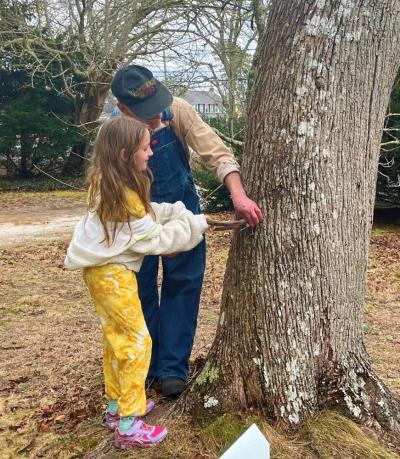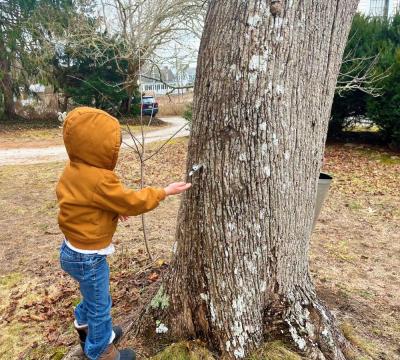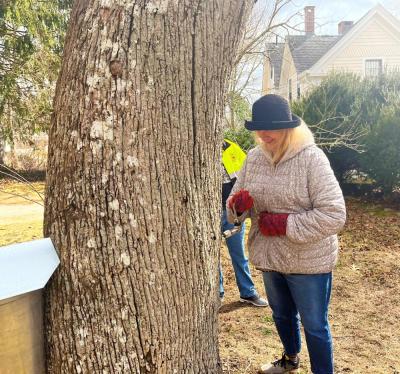Tapped in: Novice maple syrup makers tour backyard forest
With over 30 years of experience making maple syrup, Onset resident Jackson Gillman might as well have the sticky stuff running through his veins.
On Sunday, March 5, guests took a tour of Gillman’s backyard maple syrup operation, learning how sap becomes syrup.
The tour was sponsored by the Wareham Land Trust as part of its Winter Wonder program series, and funded with a grant from the Wareham Cultural Council.
Gillman got his first taste of making syrup when he was in college. He was introduced to the process by his friends, brothers who owned a forest of maple trees in northern Vermont.
Gillman said that the brothers did things the “old-fashioned” way, collecting sap with buckets as opposed to using a system of tubes.
“I felt really cool as a little guy doing this farmer work with these 40-pound buckets,” he said. “I got to feel what it’s like to be an ox.”
When Gillman moved to Onset in 2000, he went back to his roots and started making syrup in his backyard.
“I got my kids starting this when they were little,” he said.
Gillman started with two Norway maple trees, but he now has 40 taps on his property. The syrup-making process begins by drilling holes into those trees to collect sap.
Most syrup makers take sap from sugar maples, known for their sweetness, but Gillman believes his Norway maples are just as good.
“A maple is a maple,” he said. “They all have sap.”
After placing a tap into the drilled hole, those on the tour got to taste the fresh sap.
“It tastes like sweet water,” Gillman said. “Most people expect it to be brown, but it’s clear.”
The famous brown color comes from the boiling process. Once the sap reaches 219 degrees Fahrenheit, it reaches the consistency of syrup.
According to Gillman, it takes over 40 gallons of Norway maple sap to make a gallon of syrup.
To filter the syrup, Gillman skims off the foam created by excess minerals in the boiling sap.
Like every step of the syrup making process, it’s time consuming. To Gillman, it’s rewarding.
“It’s a labor of love,” he said.
















